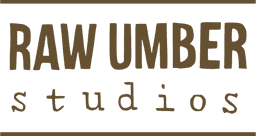Simplification: Create a painting in under 15 shapes
Thursday 2 December, 2021
An alla prima study from life by Lydia Cecil
Join Lydia Cecil as she paints an aubergine in just 15 shapes. And then have a go yourself, and you could win £50 of vouchers from Pegasus Art.
I find nothing scarier than looking at a blank canvas. And I’ve been in a car with my mother. Mercifully I can steal techniques from trailblazing artists that have come before me. As we all should. In this article I am stealing the concept of ‘shape design’.
Often articles on ‘drawing with shapes’ explain how to draw something like a bicycle in a series of circles and cylinders. The result is a competent mechanical drawing and, if left like that, one with no soul. No disrespect, but I’m judgmental.
This article is about how representational art approaches the concept of shapes. Representational art takes readable references directly from reality. It mimics the way our eyes take in information. The 3D reality is understood as 2D shapes on our retinas. Flip it around and you can say our eyes work representationally. They focus here, blur over there. Roll over and merge objects. Create narratives of light. In other words, they don’t take in the entirety of an object in isolation like some sci-fi computer robot with a green 3D-grid. As Edouard Manet pointed out in the pre-computer-robot-era, ‘There are no lines in nature, only areas of colour, one against another.’ I.e., SHAPES. (The favourite but desperately overused word of this article).
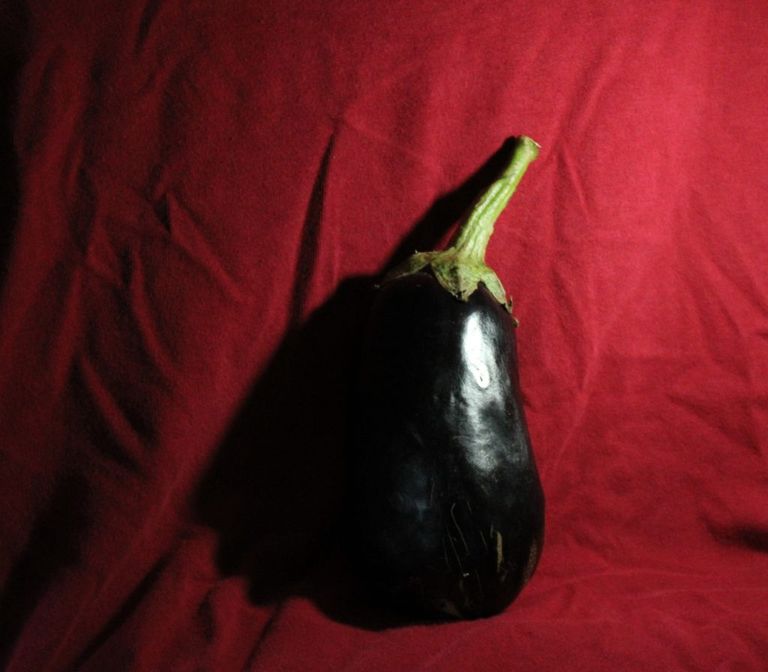
It's about drawing what you see. Not what you think you see. A child will draw an eye as a circle because that’s what they assume the shape of an eye is. It’s quite impressive imagination because everyone knows you don’t see a whole eyeball on someone’s face. You see an overlapping patchwork of light, shadow, and colour, of which one jigsaw piece is a sliver of the spherical eye. (So really the child is right of course. Damn their enviable imagination.)
Take a representational artist like Joaquίn Sorolla. ‘The Master of Light’. Try breaking down his paintings into shapes of light and see how this patchwork takes effect. The strength and control of his shapes is what makes the light dance over form and colour.
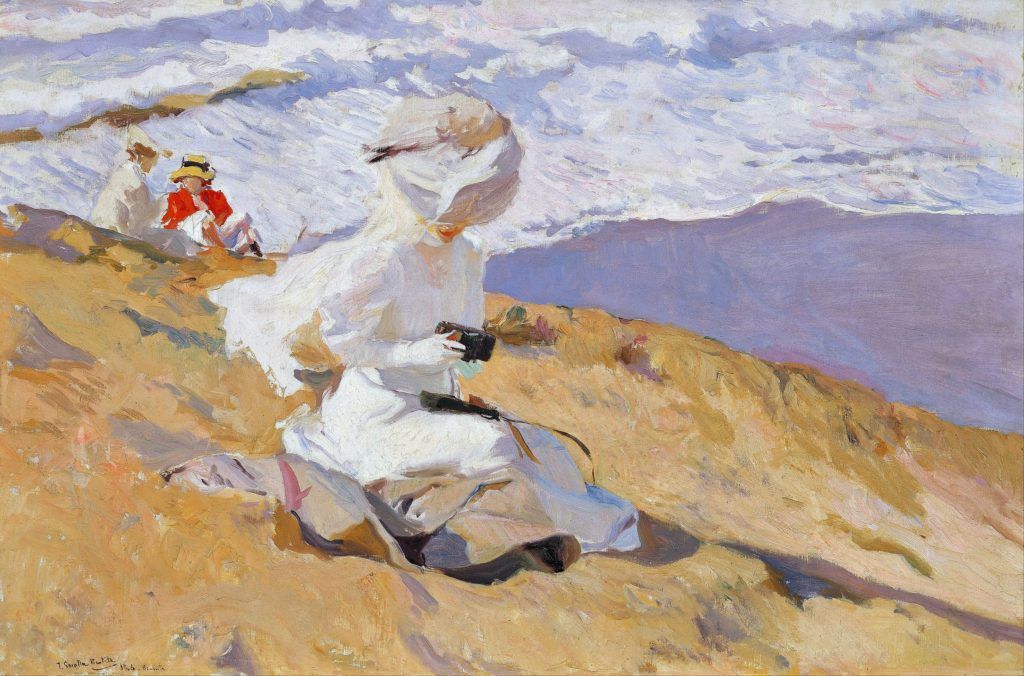
I will be breaking down this aubergine painting into 15 shapes. Building up structure through light and dark. Differentiating Manet’s ‘areas of colour’. Making the form turn by manipulating those shapes. And not mentioning an eggplant once.
A poor follow-up after Sorolla I hear you say. Yes, but he probably used more shapes… and some superhuman power.
I start with a burnt umber imprimatura. A wash that stains the canvas. This makes me feel important using a word like ‘imprimatura’; breaks the fear of a white canvas; and provides a transparent base mid-tone to dissipate its bright glare.
I always look to start large and basic, before getting progressively smaller and more complex. It’s like starting an explanation of War and Peace by saying it’s a love story with a few battles. Then you deal with the rest.
Blocking in the shapes
- Therefore, my first shape is the big one; the aubergine’s main mass together with its shadow. You never see anything in a vacuum. What surrounds a subject informs how you see it. For this set-up, enveloping the shadow with the aubergine makes a more obvious and visually arresting shape than drawing the aubergine alone.
- The second shape; the stalk. Keeping it simple – one angled rectangle reaching up to the top right-hand corner. I only use straight lines for these shapes. They are reliably more accurate than a curve. Any curve can be broken down into straight lines with specific angles breaks. I dare you.
- The stalk’s shadow. It sounds like the stalk has a stalker.
- The shadow line, shadow line, Oh you beautiful shadow line. Rumoured also to be called the ‘bed bug line’ – the frontier beyond which the dark-dwelling blighters dare not go. It’s the basic distinction between light and shadow. I look for where the light no longer reaches and follow that line down the form. Filling it in solidifies the form. No more singular lines - we are dealing in masses. Areas of colour. SHAPES.
Before going further, I pause to refine the form. Design the shapes. Observation is key. I modify the masses by slightly shifting contours and adding angles breaks.
I mix up all my main colours on my palette (my one true love, nothing but nothing comes between me and my palette.) Now massing them in can literally feel like colouring-in-by-numbers. The shadow - both on the cloth and on the aubergine - is one dark mass. The red cloth and the base half-tone for the light area go in. Don’t worry, I’ll build up to those bright lights later.
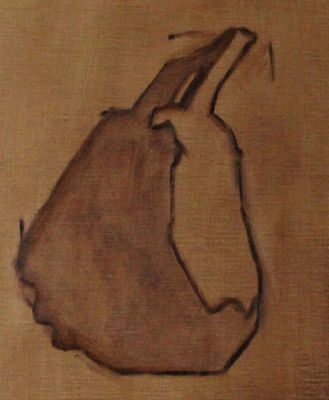
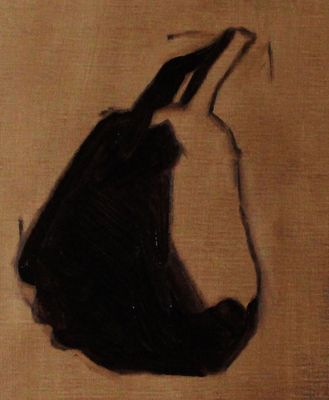
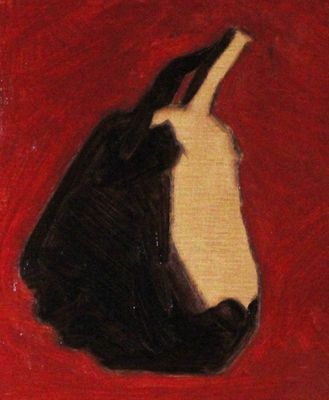
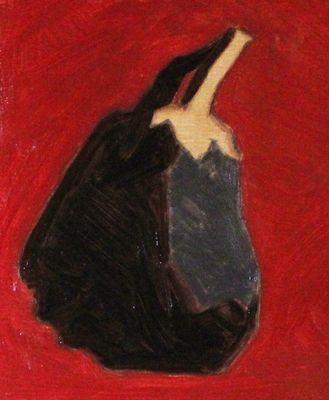
Adding the first 4 shapes
- The fifth shape is the dark-green half of the aubergine’s hat. Because a hat it clearly is.
- The light half of the hat can now safely be filled in.

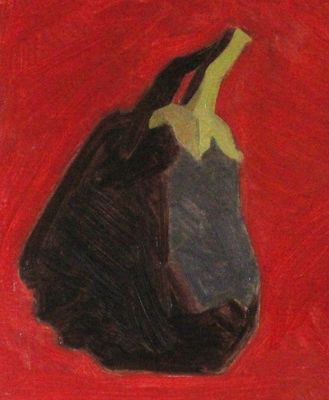
Shapes 5 and 6
- I add in a lighter shape on top of the mid-tone. Again, I try to observe this shape as accurately as possible, treating it as a precious millennial who needs care and attention.
- An even lighter shape goes on top of that.
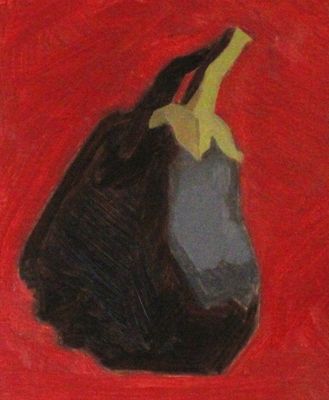
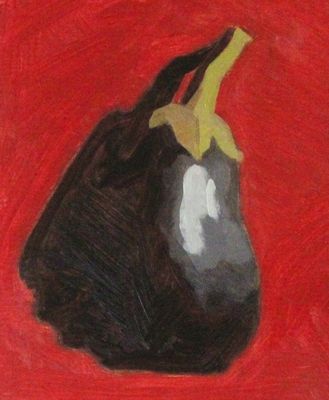
Shapes 7 and 8
[rus_email_subscription]
Want to access SEVEN of our past online sessions for FREE? Simply sign up to our newsletter and we'll email you a link. Plus we'll keep you up to date with our upcoming online sessions, competitions, workshops and events.
[/rus_email_subscription]
Another pause for shape design. This time I observe the interactions between the shapes. How do their friendships work? I start along the original shadow line. The OG. Where does it soften and what makes it sharpen? I use this technique to travel around the contours of all my shapes. Internal and external. As it’s an alla prima study, all the paint is wet and malleable. So, when I take the meeting line between two shapes, I should manipulate that edge with two separate brushes. One for one shape, one for the other. That way I can play a game of give-and-take between them and hopefully end up with a more nuanced representation of their relationship. I should stop anthropomorphising shapes.
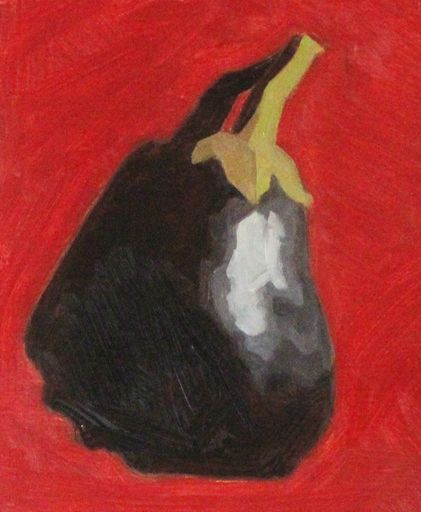
- I can have fun with some reflected-light shapes. The first is the dark blue in the lower left half of the aubergine. I still haven’t bothered to differentiate aubergine from shadow – it’s not worth wasting a shape on. I only have 15 for God’s sake.
- The dark alizarin reflected in the top left half suggests form there.
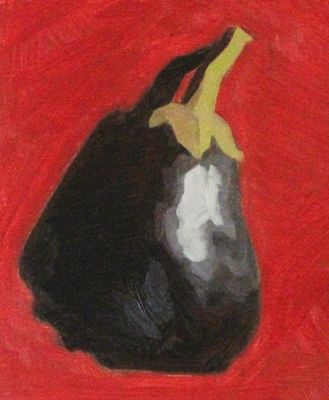
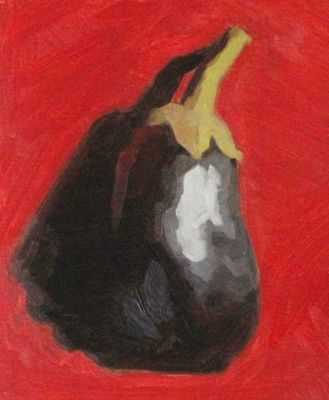
Shapes 9 and 10
- The shapes get even smaller. The darkest segment on the leaf hat is differentiated from the shadow and given its own dark-green hue.
- I gift the stalk a highlight. Such generosity.
- The big highlight. The bit we’ve all been waiting for. I use a touch of cadmium yellow in the thick white paint to embolden that particular shape.
- A final reflected light shape in the bottom right corner sets it off.
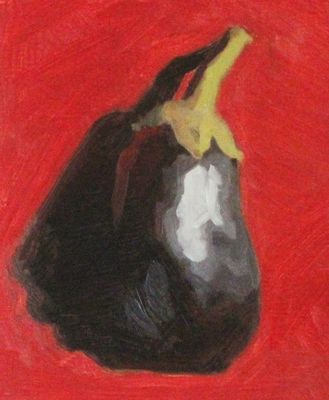
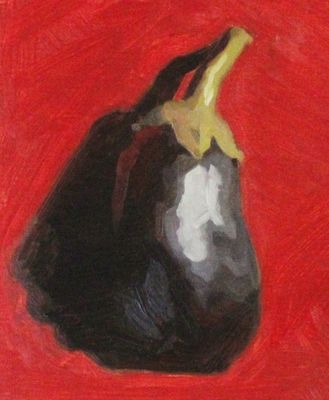

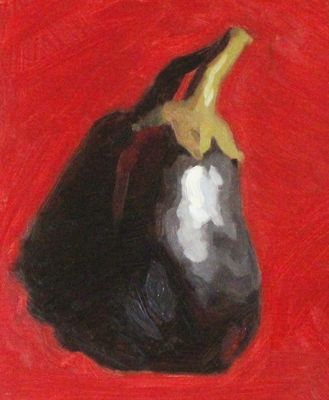
Shapes 11 - 14
- Have a drink. Yes I will, thanks for asking.
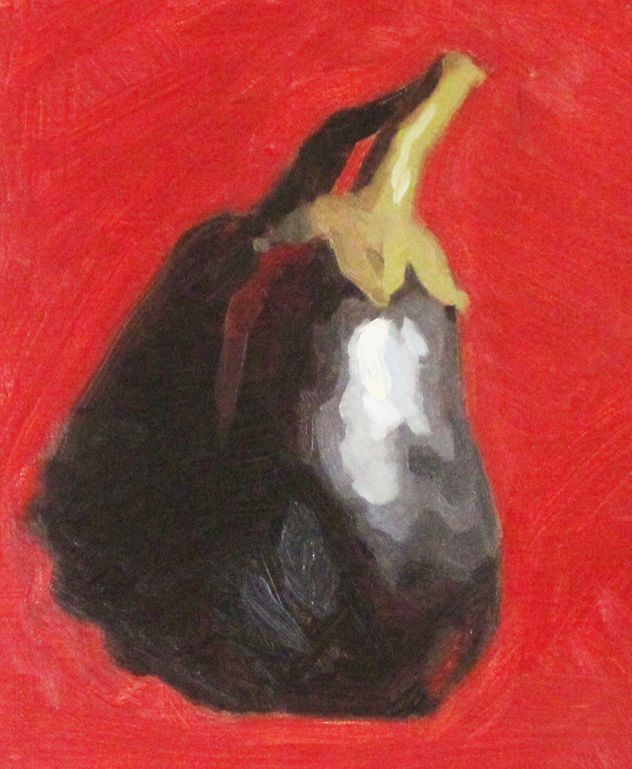
If, at any point over the course of this, you thought of a certain emoji, get your mind out of the gutter… 😉
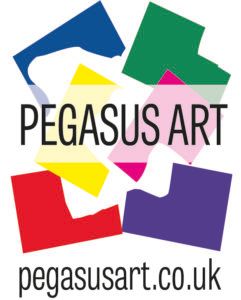
Want to have a go yourself? You could win £50 of vouchers from Pegasus Art! Here's what you have to do:
- Paint a picture using at most 15 shapes
- Post it on Instagram before December 31st 2021
- Tag #rawumberchallenge, @rawumberstudios and at least one other person
- That's it!
